The testing of exterior wall assemblies with combustible components such as plastics and foam plastic insulation is an important consideration in fire safety design. International building codes generally require full-scale testing to confirm vertical and lateral flame spread in buildings that will be limited to the acceptance criteria in the applicable test methods. Standards referenced by the building codes have historically required wall assemblies to be tested based on their intended installation. Ideally, components of the tested assembly must match the design identically as constructed - with no differences in materials, components, or configuration of materials. As exterior wall assemblies become increasingly complex due to the demands of energy efficiency as well as resilience in buildings, there are challenges posed to fullscale testing of assemblies when a variation at construction occurs (Greenwald & Banks, 2021). Such variations may be due to unique field conditions arising during construction, unforeseen design errors,...

Perforated Façade Design
A façade is the most striking elevational feature of a building. A good play of volume, scale, light, and shadow constitutes an impressionable façade design. The façade is an architectural element that enhances the visual aesthetics and indoor environment of the structure. With the advancements in science and technology, modern-day architects have been experimental with façade designing. New materials and computational software have made it easier to explore new façade design concepts. [caption id="attachment_48254" align="alignleft" width="400"] Jali building façade[/caption] Glass-cladding façades have been a long-standing choice for elevating building elevations. However, the suitability of glass in the tropical weather of India has been questioned because of its heat-absorbing and light-reflective properties. The excessive use of glass in façade designs created the urban heat island effect. A glass façade traps and reflects heat thereby impacting the micro-climate and increasing local temperatures. Hence, glass façade buildings consume more energy to support ventilation...
Posted on: 28 Jun 2022

Materiality is a Major Factor in Outlining Greener Buildings
An Interesting interview with Ar. Sumit Dhawan Founder & Principal Architect, Cityspace '82 Architects talks about his journey over the years, major projects, and his design principles. He also explains the key factors to consider while designing façades for various types of projects, on choosing materials for façades and the latest technologies applied to attain the most sustainable buildings. Hers is the excerpt from the interview Please tell us about your practice and its growth over the years? I started a solitary practice directly after completing B.Arch in the year 2005 and founded Cityspace’82 Architects. My childhood passion for architecture manifested my perseverance and belief which lead me to practice unconditional hard work. I got my first project immediately after the completion of my internship in the last year of college. The project was a 500 Sq yd residence in Gurugram assigned to me by a friend’s father Mr. Bhutani,...
Posted on: 20 Jun 2022

Integration Façade Design and Building Operations
Building costs are spiralling, and global climate change is looming large. In an attempt to curb long-term operational costs and create efficient building systems, architects and building owners are now on the lookout for optimising every part of a building – including the envelope, the mechanical systems to interior finishes. [caption id="attachment_48034" align="alignleft" width="217"] Max Super-Speciality Hospital, Vaishali, New Delhi[/caption] A building’s envelope constitutes a large part of the system. In energy-intensive buildings such as hotels, offices, and hospitals, building envelopes contribute to as much as 55-60% of the total energy usage (Commision n.d.). This data provides valuable insight into how a building’s energy footprint can be checked whilst creating a high-performing assembly. As a result, stakeholders are required to lay an unprecedented degree of emphasis on building façade, its optimisation and integration with occupants’ needs. By definition, a high performing façade or façade element is one that encapsulates sustainable...
Posted on: 10 Jun 2022
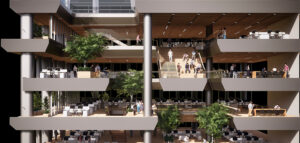
“The Leadership of Green Buildings is Very Impactful”
Is it possible to build high and build green both at the same time? Yes, the density in the tall building has selected intrinsic green elements in terms of per capita consumption. What are the strategies to manage energy and other resources consumption through effective design of façades to attain net-zero building? The façade can shield us against the exterior elements but also, like leaves, assist us in harvest selected elements. The list can include thermal, infiltration, exfiltration, lightning strikes, precipitation, wind, hail, air quality, sunlight, acoustic, odor, microbial, fire, electromagnetic waves, and stack effect. What are future window & façade technologies that could save signifi cant energy in buildings? First is dynamic, which can react to indoor and outdoor demand, second is smart, which can shield the unwanted elements, but take in the beneficial ones. [caption id="attachment_47573" align="alignnone" width="762"] Image 1A, B: Pearl River Tower: The supertall corporate headquarters...
Posted on: 12 May 2022
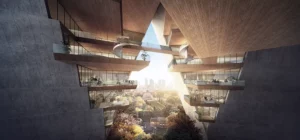
Zero Energy Buildings: Key to Sustainable, Human Friendly Future
Building construction and operations make up 38% of the world’s energy-related CO2 emissions, according to the 2020 Global Status Report for Buildings and Construction published by UN Environment Programme. To significantly decarbonise our buildings, one of the key innovations being actively explored by architects is the idea of a ‘zero energy building’, which has attracted much discussion across the building industry and academia and is now increasingly seen as critical for the future sustainable smart cities. What are zero energy buildings? This article highlights some of Professor Lau’s insights on the future of zero energy buildings in the hope of instigating its wider adoption. At its simplest, zero energy buildings generate as much energy on-site as it consumes, through renewable sources, on a yearly basis. This makes its energy consumption ‘net zero’. While there are different approaches to maximise energy saving, passive design features often form the core of all,...
Posted on: 02 May 2022
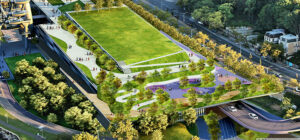
A Guide to Comprehensive Façade Design
In architecture, façades can be considered as visual gateways to buildings. In addition to providing a watertight enclosure, façades also control the amount of natural lighting, ventilation, and thermal protection. Façades greatly influence the aesthetics of buildings and can also have a huge impact on their energy efficiency, lifespan, and ease of maintenance. Here are some parameters to consider while designing façades and fenestrations so they can create an incessant dialogue with the surroundings as well as the observer, in addition to being energy-efficient and sustainable. COMMUNICATING FAÇADES When considering building designs that communicate with its surroundings, façades have to be regarded with a keen design eye and sensitive outlook, as they are what first catches the attention of the spectator and sets the tone for the rest of the building. They can be often misinterpreted as static emotionless walls embracing trendy silhouettes and flashy materials, with little regard to...
Posted on: 25 Feb 2022
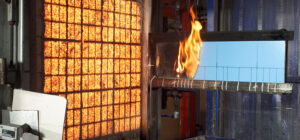
Ways to Reduce Fire Risks in the Buildings
Common Causes of Fires in Buildings The potential reasons for fire to start are numerous. However, fire needs three elements to start, and a chain reaction to keep it going – heat, oxygen, and fuel. In WSP we tend to focus on the aspects of heat and fuel because oxygen is usually ubiquitous. Heat, in many respects, is synonymous with ignition, and fuel is a function of the quantity and availability of combustible material. So, armed with that information it’s easy to conceptualize the common causes, and they follow naturally. There are sources of fire that we humans intend to create – cooking, heating, and smoking are obvious. There are others that, although necessary, we don’t necessarily intend to create – electrical sparking resulting from flicking a switch being the most common, but also, when it goes wrong, the heat, sparking, and flames that result from a failing electrical unit....
Posted on: 10 Feb 2022
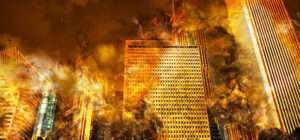
Making Buildings Fire-Safe: Best Practices To Follow
In any building, fire safety is of the utmost significance. Fire safety should always be taken seriously, and there are many simple techniques to minimize the risk of a fire. The design stage is where fire safety for façades begins. The architect, in collaboration with the other technical disciplines, should guarantee that the design aesthetic intent is met while maintaining the requisite technical performance. The usage of fire-safe products and technology is critical. Extensive research and testing are frequently used to develop these items and technologies. Each component of the façade system should be tested for fire resistance. In this cover story, the views and suggestions of subject-matter experts are presented. We tried to get their opinions on façade fire safety, the codes & regulations, the suitable materials, the right way to design the façade to make it fire-safe, and so on. Common causes for fires in Buildings in the...
Posted on: 31 Dec 2021
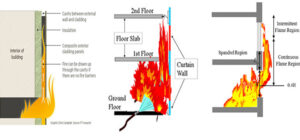
The fire safe design will lead to less reduced risks of fires to spreading
Could you please explain some of the common causes for fires in Buildings in the Middle East? How can fire risks be reduced? Fires are mostly caused by human error and fire usually starts small before it becomes large and uncontrollable if the proper action is not taken or if the fire spread mitigations are not in place. The fire spread mitigations are fire detection and alarm, fire extinguishing and fire control, and passive fire safety. All these need to be maintained and malfunction of one of those systems can cause fires to develop. Please explain the role of design in fire-safe buildings? A design that incorporates fire safety measures will lead to reduced risks of fires spreading and developing but it also allows people to escape safely in case of fire and allows firefighters to access the buildings effectively. What is the role of fenestration design in fire-safe buildings?...
Posted on: 30 Dec 2021
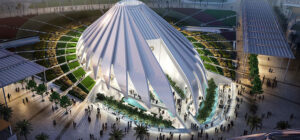
Fire Safe Facade – Requirements and Design Vs Practical Installation
Façades during the olden days were only an architectural building cover. Those beautiful architectural building covers became the eye-catcher in the course of any fire incident. Those façade elements had such chemical characteristics which contributed severely to the high Intense and fast propagating external fire. Such characteristics of those façade elements created a necessity for designing the fire-safe façade. Modern Fire-safe Façade Designs and Fire Tests Façades, nowadays are designed considering the importance of limiting the external fire propagation. Passive firestop systems are intermingled with façade designs to achieve minimal fire spread. Materials specified to be used on the external façade are being carefully chosen considering their fire performance characteristics. Fire tests according to various standards are adopted for testing the materials to find out its characteristics such as ‘Reaction to ’ and ‘Resistance to fire’. The development and introduction of new Fire-safe products in the market that are suitable...
Posted on: 27 Dec 2021
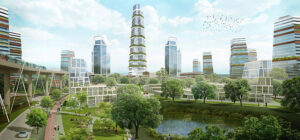
Façade of a Building Provides the Most Apparent Visual Experience
Tell us about your practice CPKA and its growth in India? C P Kukreja’s vision, hard work, imagination, and human values have been the core of our firm and have set the foundation for achieving what we have achieved today. Our team has been consistent in delivering meaningful architecture through significant projects over the last five decades which has not only made a difference in many Indian cities but abroad too. Concepts of eco-friendly design, culturally responsive architecture, and futuristic and innovative ideas have been propagated through the design and construction of numerous projects. Our practice has achieved many successful milestones from delivering the design of one of the largest to the tallest buildings in the country, promising that every project is special in its own way and gives out a significant message about the very idea of ‘architecture’ and its future to the society and beyond. [caption id="attachment_45874" align="alignnone"...
Posted on: 23 Dec 2021
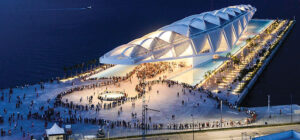
The LEED Plaque has Become the Symbol of Green Building Leadership
Tell us about USGBC and its role in the ratings and certification of buildings. For more than 25 years, the U.S. Green Building Council has been dedicated to building an awareness of the impact buildings have on the environment and human health. With the evolution of LEED and the incredible support of our partners, we have established an entire community of sustainability leaders around a common cause: better buildings equal better lives. [caption id="attachment_44809" align="alignright" width="362"] Hearst Tower, New York City, New York, LEED Platinum[/caption] Over the last two decades, the LEED plaque has become the symbol of green building leadership. Today, people know that if they are in a LEED-certified building, they are using less energy and water, avoiding waste, saving on maintenance costs, improving indoor air quality, offering comfort to their occupants, and creating a less environmental burden on their community. With 110,000 registered and certified LEED commercial...
Posted on: 18 Nov 2021
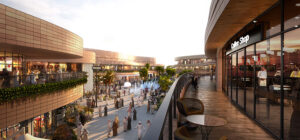
“The Middle East has successfully carved a unique and distinguished position for itself when it comes to global design and architecture trends”
Tell us about your practice and design approach? Gensler is the world’s largest architecture, design, planning, and consulting firm, with 49 offices around the globe. Gensler architecture reflects our knowledge of how people and organisations use and experience place and space. We work collaboratively with clients, communities, and end-users to create buildings that work well on every level, inside and out. Successful buildings capture the spirit of their surroundings, even as they assert their own identity. [caption id="attachment_44493" align="alignright" width="362"] Four Seasons Hotel, Burj Alshaya Centre, Kuwait City,Kuwait The design concept has been developed around a regional architectural tradition, resulting in a contextual building[/caption] They are visually appealing, healthy, comfortable, flexible, secure and efficient, a pleasure to be in. And they pay their way, adding real value for their owners and users. Our Middle East studios in Dubai and Abu Dhabi utilise cultural research as both catalysts for community engagement...
Posted on: 28 Oct 2021
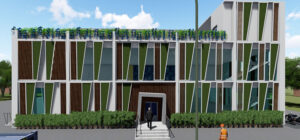
Sustainable Buildings – Role of Façades
Looking at finite resources, how can you define sustainable development considering façade design for urban buildings? As far as façades are concerned we do not favor cladding as a design option. We choose instead to build with the specific material to gain the desired effect. This eliminates the add-on material load, additional consumption, site-level wastages. Opting out of the additional cladding layer is sustainable in itself. The selection of materials suitable to local climatic conditions would be a smart choice in terms of sustainable façades. [caption id="attachment_44204" align="alignleft" width="300"] ABS Corporate Office in Chetpet, Chennai[/caption] A study on building materials and methodologies can inform the design decisions most sustainable in a particular region. For instance, can we adopt lime mortar instead of cement plaster? Lime mortar offers better preservation of the base building block like bricks, is more porous, more durable, absorbs carbon in its setting process, and offers a...
Posted on: 19 Oct 2021
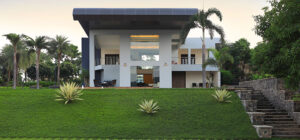
Insights into the Building Envelopes of the Future
By 2050 it is anticipated that there will be an extra two billion city dwellers across the globe and the general consensus is that sustainability can only be achieved by minimising the negative environmental impact of buildings by efficiency and moderation in the use of materials, energy, development space and the ecosystem at large. A more sustainable approach to future façades is needed. There must be a common global goal, rather than individual agendas, and innovation of new energy efficiency products and optimisation of current façade space to create more sustainable buildings. This year World Environment Day on June 5 marked the formal launch of the United Nations Decade on Ecosystem Restoration (2021-2030), a decade which efforts in preventing a major climate change and assisting the recovery of ecosystems that have been degraded or destroyed, as well as conserving the ecosystems that are still intact. It seems logical that the...
Posted on: 14 Oct 2021


